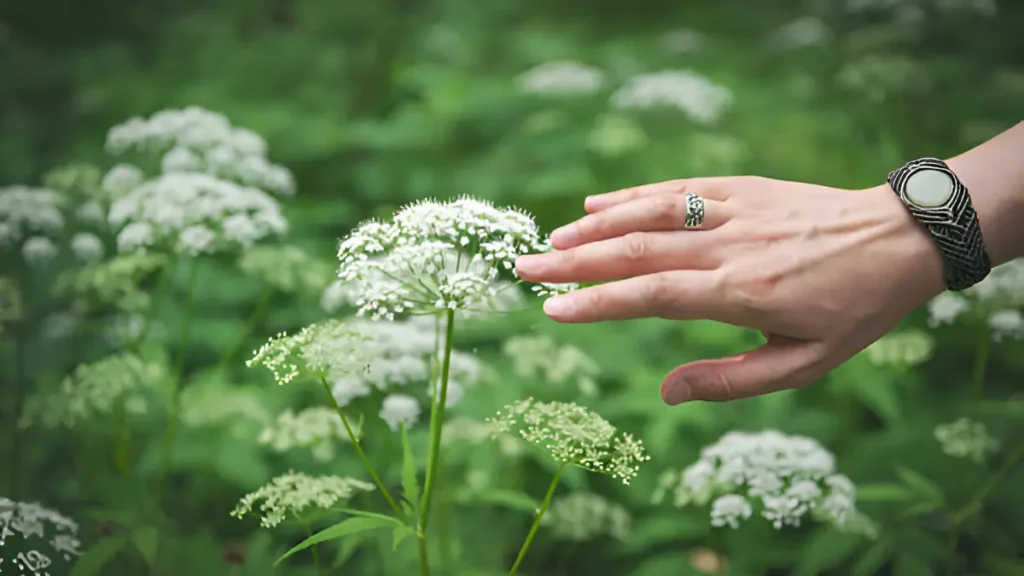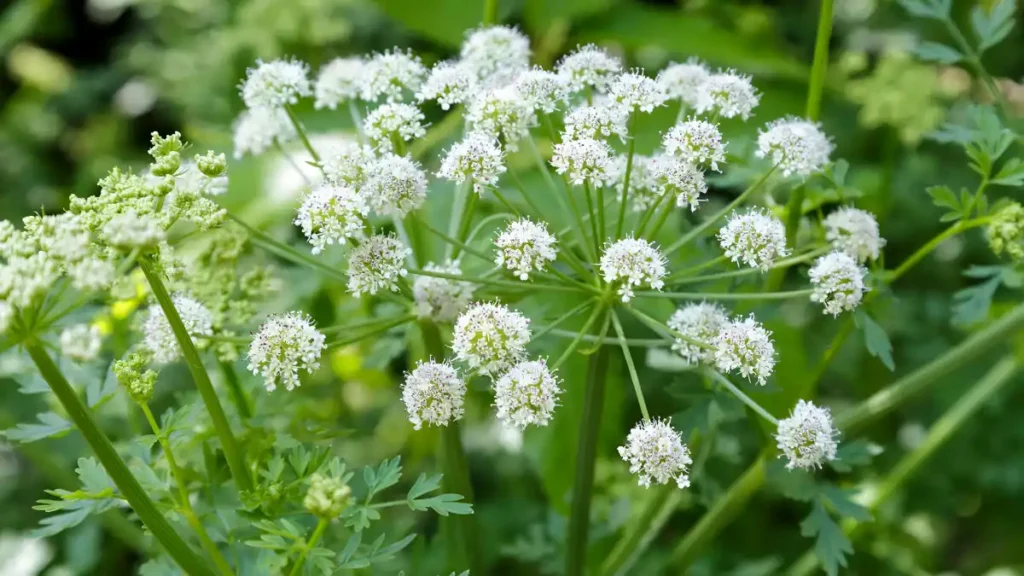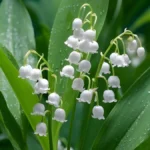Among the extensive and varied flora of North America, one plant is notable for its extreme toxicity and illusory allure—Water Hemlock (Cicuta spp.). Because of its innocent, parsley-like look, water hemlock is sometimes misidentified as edible or innocuous plants. However, it is without a doubt the most poisonous plant in North America. Found in damp meadows, streambanks, and marshy regions. This plant is known for its deceptively fragile white umbrella-like blossoms and contains cicutoxin, a strong neurotoxin. Just a single bite can cause convulsions and even death in minutes.
| Scientific Classification | ||
|---|---|---|
| 1. | Kingdom | Plantae |
| 2. | Family | Apiaceae |
| 3. | Genus | Cicuta |
| 4. | Species | Multiple, including Cicuta maculata, Cicuta douglasii, and Cicuta virosa |
Water hemlock is a perennial herbaceous plant that may grow to 6 feet tall. Its stems are generally purple-streaked and hollow, with chambered roots that are highly poisonous and frequently mistaken for edible tubers such as parsnips.
The leaves are complex and fern-like, and the plant produces umbrella-shaped clusters of little white flowers from late spring to summer, giving it the appearance of Queen Anne’s lace or wild carrot, contributing to its deceiving danger.
Water hemlock identification:
- The leaves are bright green, fern-like, with serrated edges.
- Stems are hollow, purple-streaked, and may include chambers.
- Flowers are small, white, and grouped into umbrella-shaped umbels.
- Water Hemlock grows from 2 to 6 feet tall. The root is very dangerous, and it is frequently mistaken for an edible tuber.
Common look-alikes
| Plant Name | Similar Features | Toxic? |
| Queen Anne’s Lace | Umbel flowers, fine leaves | No |
| Wild Parsnip | Similar height and flower clusters | Mildly toxic |
| Poison Hemlock | White flowers, purple-streaked stem | Yes |
Historical incidents and deaths:
Throughout history, countless deadly poisonings have occurred owing to the inadvertent absorption of water hemlock.
- In 1903, eight children in Oregon died after biting the plant’s roots.
- Livestock fatalities, particularly cattle and horses, are common in rural agricultural regions.
- Even famed naturalist John Muir accidentally swallowed water hemlock but lived thanks to a small dose.
Toxicity explained: Why water hemlock is so lethal:
The deadly toxin – cicutoxin
Cicutoxin is a highly unsaturated alcohol that directly affects the central nervous system, inducing seizures by interrupting neurotransmitter signaling.
It is primarily concentrated in the roots, although the entire plant is dangerous.
How much is deadly?
- For humans, 0.1 gram of root may kill a kid.
- For cattle, as little as 8 ounces (225 grams) can be lethal.
Symptoms often manifest within 15 to 60 minutes, which is generally too late for antidotes.

Symptoms of water hemlock poisoning:
Initial symptoms:
- Nausea
- Vomiting
- Salivation
- Tremors
Advanced symptoms:
- Grand mal seizures
- Muscle twitching
- Abdominal pain
- Respiratory paralysis
Medical treatment and first aid for water hemlock poisoning:
Immediate medical assistance is the only way to survive. Emergency steps include:
- Calling emergency assistance without delay.
- Avoiding causing vomiting.
- Monitoring respiration and seizure activity.
- If poison control recommends it, provide activated charcoal.
- Rapid transportation to the hospital for supportive care, such as benzodiazepines for seizure control and breathing assistance.
Ecological role and paradoxical value:
Interestingly, while water hemlock is extremely poisonous to mammals, some insects and pollinators may interact with its blossoms without harm. This plant also contributes to wetland environments, stabilizing soil and supplying honey for bees and other pollinators.
However, the environmental advantages do not outweigh the hazards to humans and animals, and management is frequently required to avoid exposure.
Control, removal, and safety tips:
Because of its poisonous nature, water hemlock should never be handled without proper protection. The methods for safe removal include:
- To avoid skin contact, wear gloves and long sleeves.
- Digging up the complete root system and bagging the plant securely
- The excised plant should never be composted owing to its poisonous properties.
- Monitor previously removed areas, since the plant can regenerate from root pieces.
- Educate children and community people about the appearance and hazards of water hemlock.
Water hemlock vs poison hemlock: know the difference
| Feature | Water Hemlock | Poison Hemlock |
| Root | Thick, tuberous | Thin, fibrous |
| Stem | Hollow, chambered | Hollow, smooth |
| Leaf shape | Coarsely toothed | Finely divided |
| Toxicity onset | Minutes | Hours |
Conclusion:
Water hemlock may look benign, even lovely, yet it is a quiet murderer in nature. It is America’s deadliest plant due to its widespread distribution, likeness to food plants, and rapid-acting toxin. Proper identification, education, and prompt medical care are the most effective ways to avoid catastrophe.
Whether you’re a hiker, forager, parent, or farmer, recognizing and appreciating this plant’s threat is critical for your safety.
Certainly! If you’d like to learn more, please consider following our WhatsApp Channel, Facebook, Instagram, YouTube, Twitter, and Pinterest.
A frequently asked questions:
Q1: Can you survive Water Hemlock poiso?
A1: Yes, if treated immediately, although there is a risk of irreversible brain damage.
Q2: How can I tell if a plant is Water Hemlock?
A2: Look for toothy leaves, chambered roots, and white flower clusters.
Q3:Is it safe to burn or compost Water Hemlock?
A3: No. Burning emits poisonous vapors, whereas composting introduces pollutants into the soil.
Q4: Is Water Hemlock invasive?
A4: It is natural and not invasive, however it is exceedingly vigorous in wet soils.



